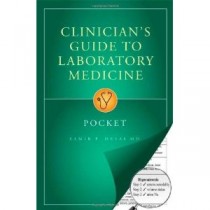Category: Laboratory Medicine
-
How to Use LDH in Clinical Decision-Making
Introduction Lactate dehydrogenase, or LDH, is a marker of cell breakdown almost anywhere in the body, most notably red blood cells, liver, lungs, heart, brain, and kidneys. Thus, a negative LDH is an extremely useful test result because it tells you that all sorts of things are not going on with your patient. An elevated LDH is also a useful and…
-

Disseminated Intravascular Coagulation (DIC)
Introduction Disseminated Intravascular Coagulation (DIC) is a very serious and life-threatining coagulation cascade disorder that is sometimes seen in patients with severe physiologic stressors such as sepsis, obstetric complications (for example, placental abruption, retained products of conception, or amniotic fluid embolization) or major tissue injury from trauma, burns, shock, snake bites, or malignancy (for example, acute promyelocytic leukemia).…
-
Hypermineralocorticoidism Explained
Introduction Aldosterone is the most important mineralocorticoid in the human body, although various other hormones, such as cortisol, display mineralocorticoid activity as well, namely they cause hypertension, hypokalemia, and chloride resistant metabolic alkalosis (urine chloride > 20). In addition, mineralocorticoids can also cause hypernatremia and hypervolemia. The triad of hypertension, and hypokalemia and chloride resistant metabolic alkalosis should…
-

Book Review: Clinician’s Guide to Laboratory Medicine: Pocket
Clinician’s Guide to Laboratory Medicine: Pocket (2009) by Samir P. Desai MD is an excellent handbook about the use laboratory studies in clinical medicine. Almost every laboratory abnormality contains an extensive differential diagnosis, along with an intelligent and efficient approach to further workup and diagnosis. It contains dozens of useful charts, algorithms and tables. The hematology and…